Katherine
Johnson
The calculations of Katherine Johnson, a brilliant African American woman from West Virginia, helped put a man on the moon for the very first time. With support from her family and the guidance of her teachers, she was able to develop her extraordinary math skills. Despite facing racial predjudice, she became one of the heroines in humanity’s race to the stars.
Long before her calculations helped the astronaut Neil Armstrong take his first steps across the moon, Katherine was counting the steps across her own front yard in White Sulphur Springs, West Virginia.
And that wasn’t all she counted. “I counted everything,” Katherine later recalled. She counted the steps from her front door to the road that ran past her house, the steps from her house to the church in the center of town, and the number of dishes, forks, and knives she had to wash after supper. “Anything that could be counted, I did,” she said.
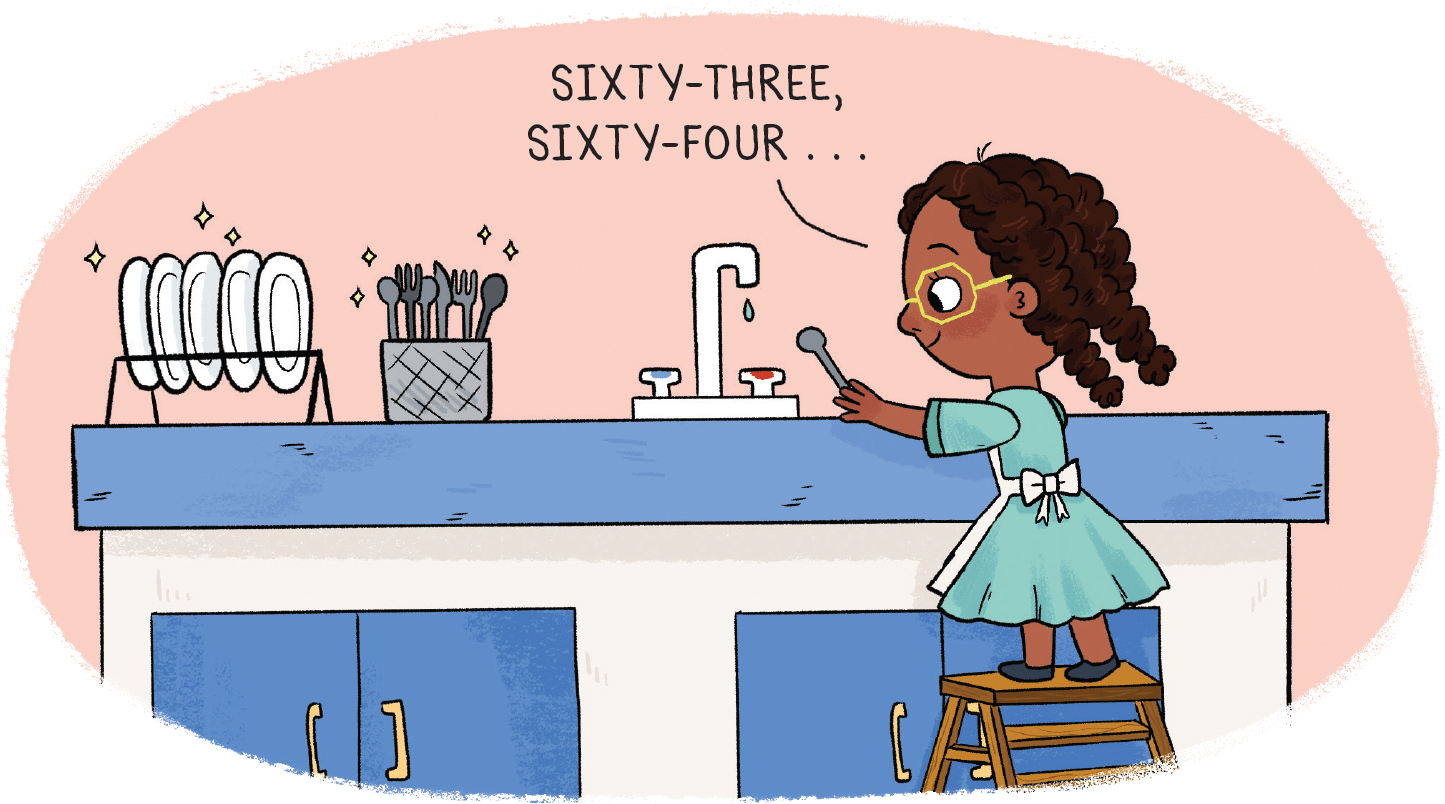
Katherine’s love of counting only grew as she got older. She likely inherited her knack for numbers from her father, Joshua Coleman, a farmer who had left school after the sixth grade. Despite his lack of formal schooling, Joshua was a math genius. He could look at a tree and instantly tell you how many boards could be carved out of its wood, just by doing the calculations in his head.
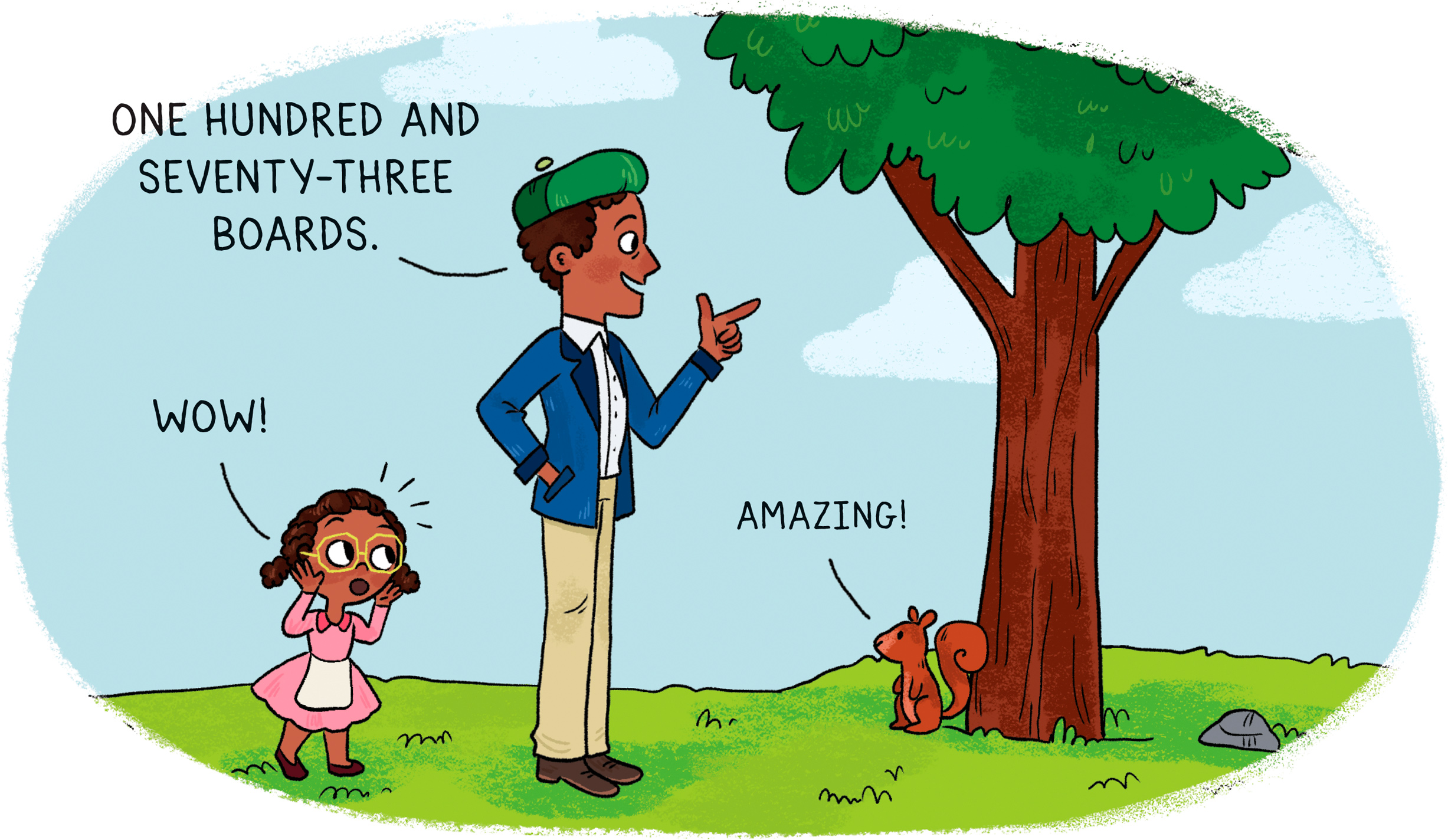
Because he regretted leaving school at such a young age, Joshua always stressed the importance of education to his daughter and her three older siblings. Katherine’s mother, Joylette, used to be a teacher, and she shared Joshua’s enthusiasm for education. Whatever Katherine would achieve in life—and opportunities were few for African American girls when she was growing up in the 1920s—she knew it would begin in the classroom.
When still a toddler, Katherine started following her older brother to the two-room schoolhouse where he attended classes. At first, the teachers would not allow Katherine inside. But when they found out that she could already read—at an age when many kids were still learning to walk—they agreed to let her attend summer school.
Katherine made great progress. When it was time for her to begin elementary school, she skipped first grade and went straight into second grade—just before she turned six years old.
Katherine continued to make a good impression on her teachers. She raised her hand often to ask questions. But every once in a while, her teachers would turn away from the blackboard to see that Katherine was missing. They would find her in the classroom next door, where she was helping her older brother solve math problems.

Being smart is great, but it wasn’t always easy for Katherine to be the brain in the family. Every night, she and her brother and two sisters would gather around the kitchen table to do their homework. After Katherine finished hers, she had to help her siblings finish theirs.
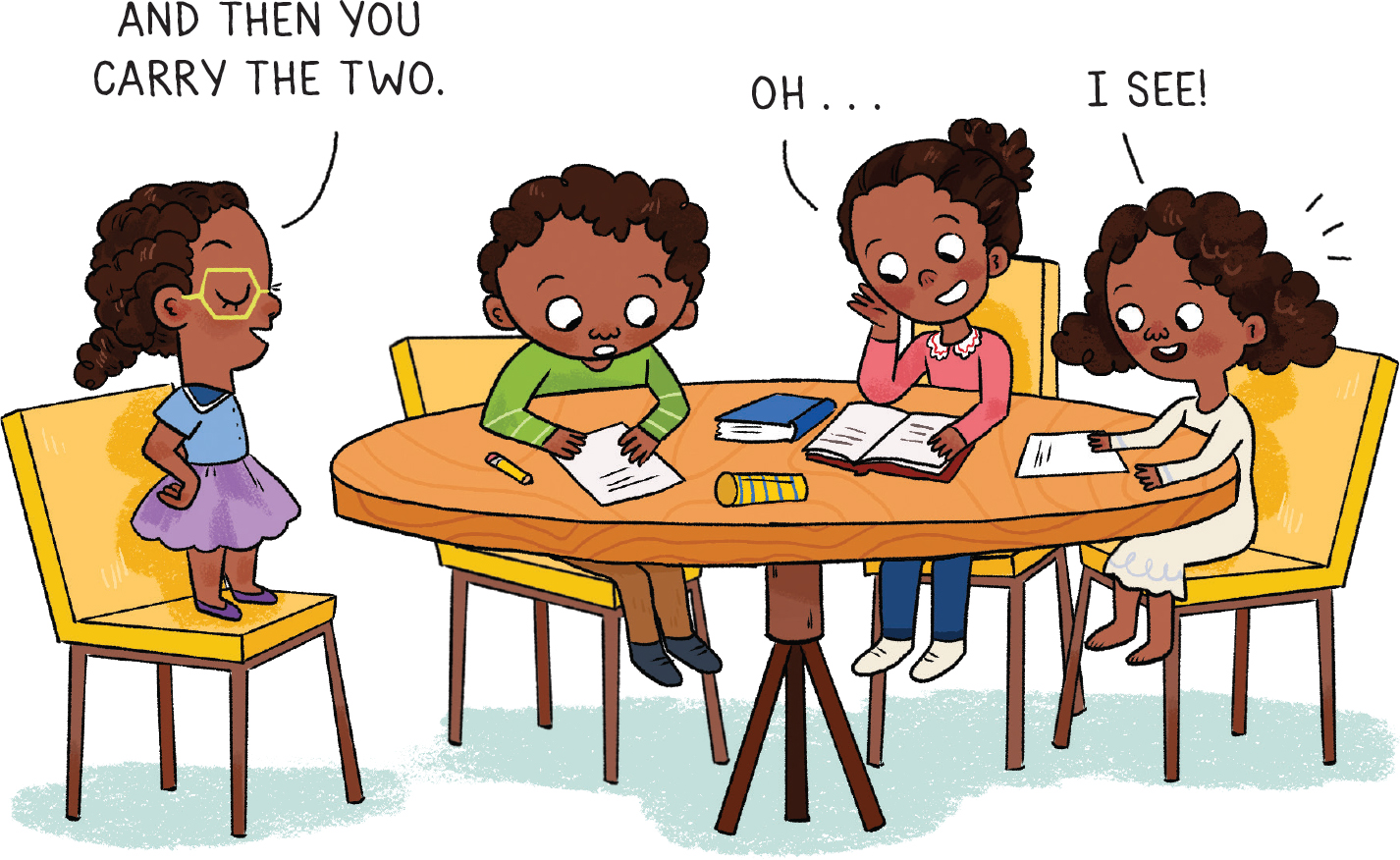
But being smart definitely had its advantages. When Katherine was about to start the fifth grade, she was permitted to jump ahead to sixth grade. She’d now skipped two grade levels, putting her one grade above her older brother. It seemed as if nothing could stop her progress.
But at the end of the school year, an uncertain future awaited. At that time, the state of West Virginia was segregated by race. White students in Katherine’s town could continue on to high school, but there were no schools beyond the sixth grade for African American children like Katherine. It was expected that she would take a job as a servant or housekeeper.
Katherine’s father had a different idea. He knew of a school in the town of Institute, 120 miles away, where Katherine could continue her education. It would cost a lot of money, but Joshua decided to send Katherine, her mother, and her three older siblings to Institute at the start of the next school year.
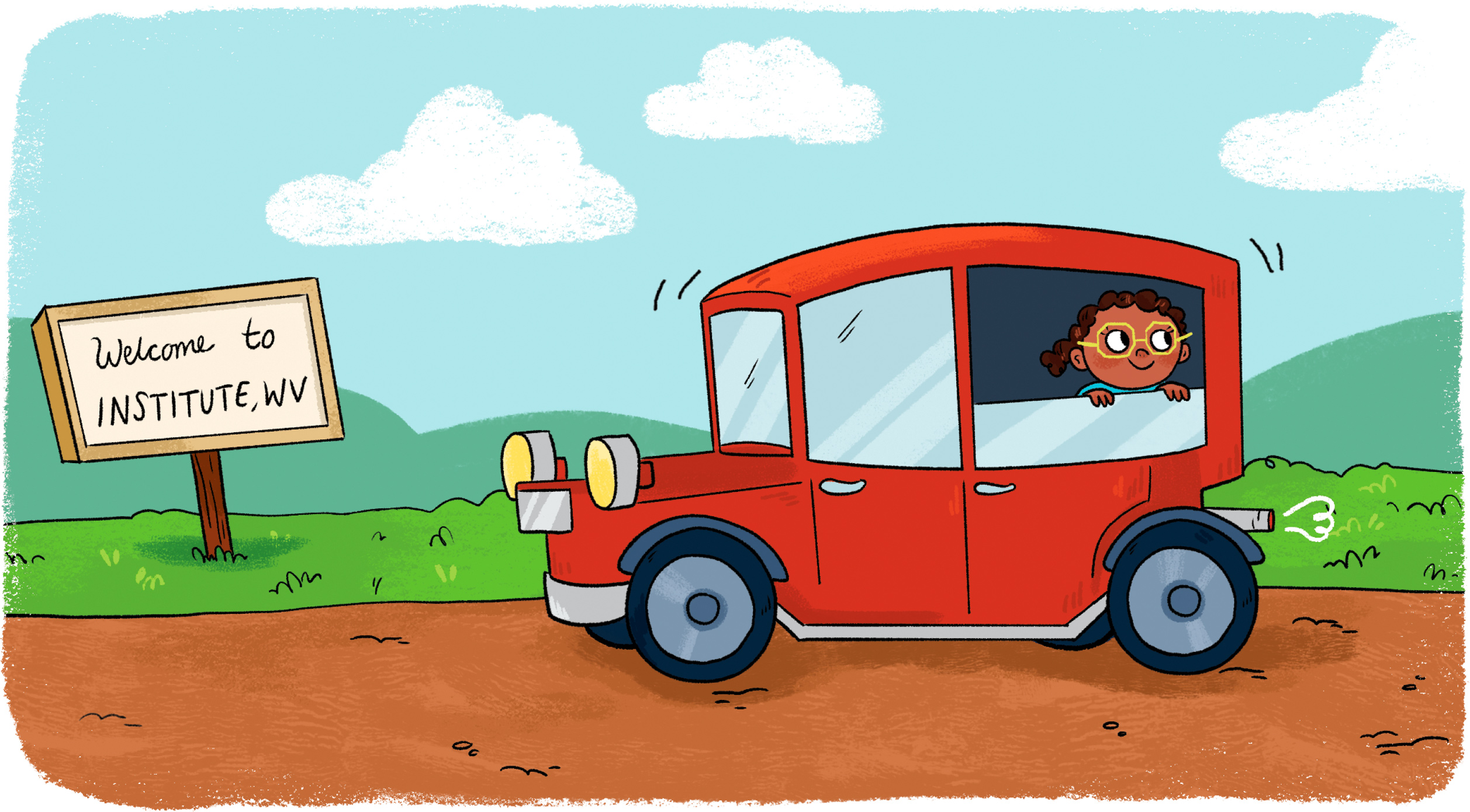
Joshua planned to move his family back home to White Sulphur Springs in time for summer break. To pay for all the travel back and forth, he took a second job as a janitor at the Greenbrier, a world-famous resort in their town.
Thanks to her family’s sacrifice, Katherine was able to attend class without interruption. In fact, she got such good grades that she was able to start high school when she was just ten years old.
The teachers at Katherine’s new school quickly recognized her capacity for learning. At the end of a long day in the classroom, the high school principal, Sherman H. Gus, would personally walk Katherine home. Along the way, he would point out the various constellations in the sky. This was Katherine’s first experience with astronomy, the branch of science that would one day change her life.
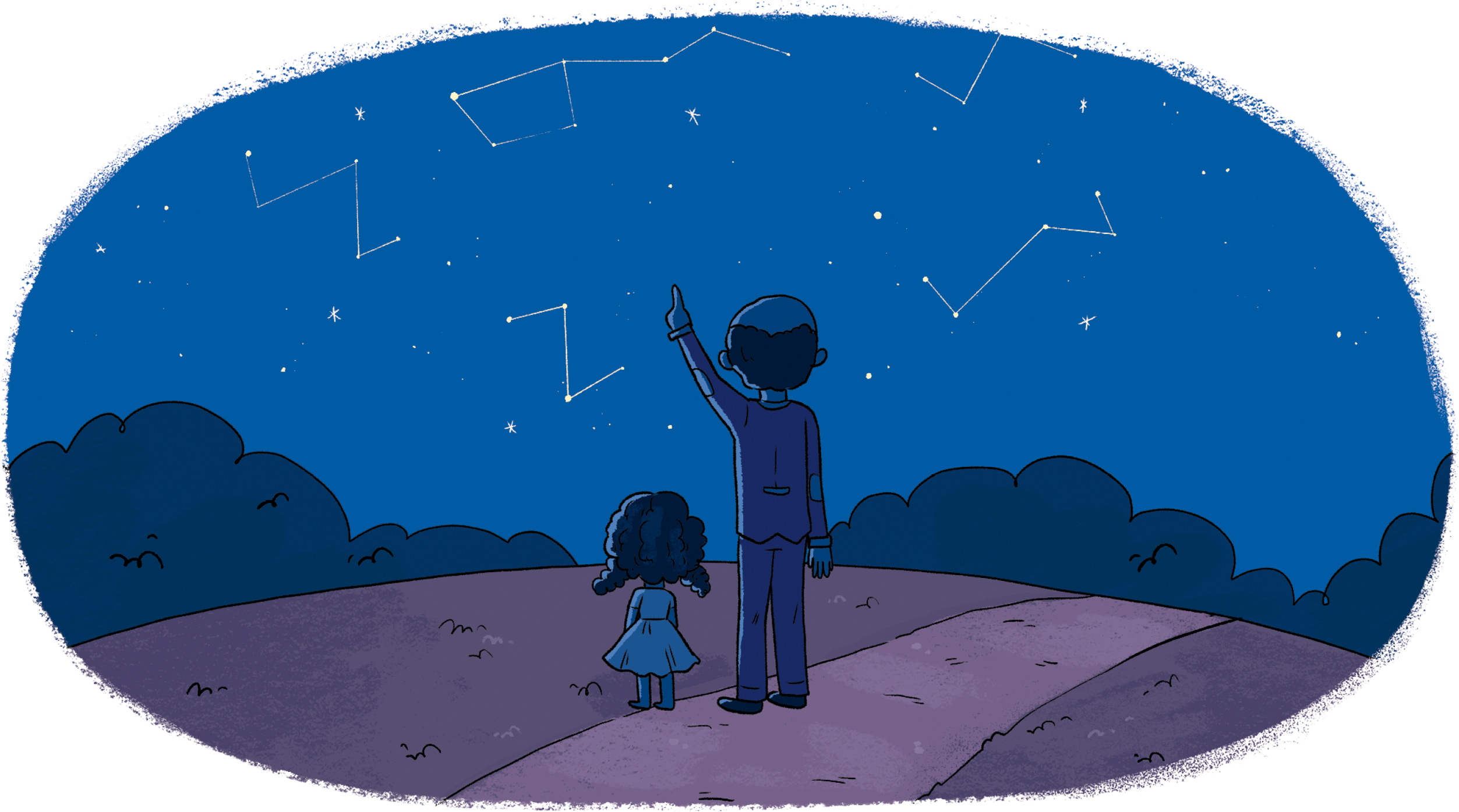
When the school year ended, Katherine returned home. She took a job as a maid in the Greenbrier resort where her father worked. For the next few summers, she cleaned rooms, washed clothes, and catered to the wealthy and famous guests who passed through town.
One of these guests was an elegant French woman, a countess, who spent hours on the telephone talking to her friends in Paris. As she tidied up the countess’s room, Katherine became transfixed by the sound of the French language.
When the countess noticed her maid listening to her conversations, she did not get angry. Instead, she took Katherine down to the Greenbrier’s kitchen and ordered the chef to teach her how to speak French like a native. Before long, Katherine had learned the basics of the language.
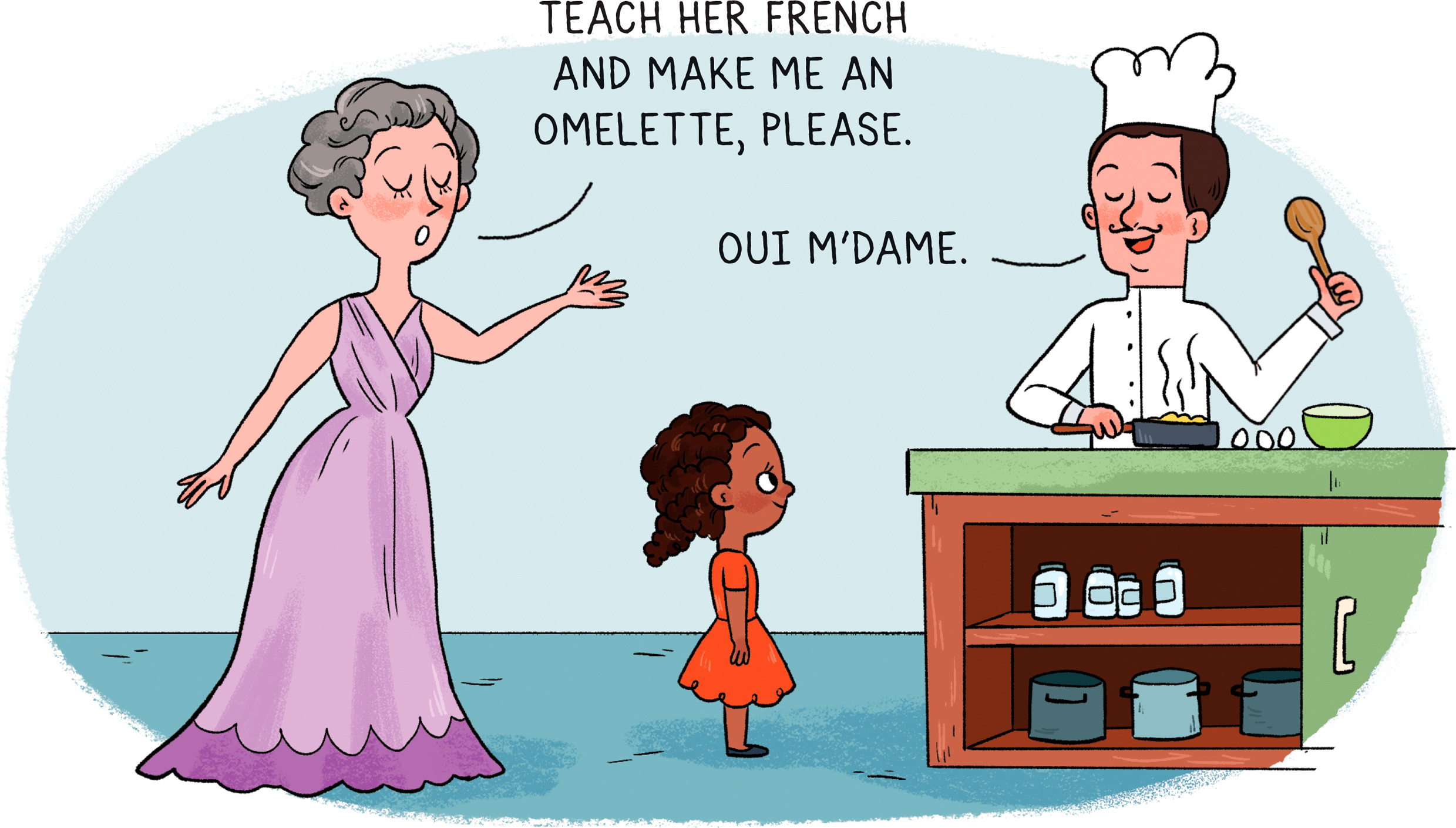
Despite having mastered math, started learning French, and been introduced to astronomy, Katherine was far from finished with her education. At the age of fourteen, she graduated from high school and earned a full scholarship to West Virginia State College.
Some kids might have been intimidated by the idea of going off to college at such a young age, but not Katherine. She had grown up across the street from the school’s campus and already knew most of her classmates. “I was the fresh kid in the freshman class and was treated no differently than anyone else,” she said.

At West Virginia State, a historically black college, Katherine was fortunate to find teachers who understood what it was like to be the star pupil. One special teacher was Angie Turner King, one of the first African American women to earn an advanced degree in mathematics education. Like Katherine, Dr. King graduated from high school at age fourteen. She’d paid her way through college by waiting tables and washing dishes. She saw that she and Katherine had a lot in common.
During Katherine’s sophomore year in college, she took a class taught by William Claytor, another African American math pioneer. Dr. Claytor was a notoriously tough teacher. During class, he would furiously scribble equations on the chalkboard, and just as quickly erase them. Very few students could follow his lectures, but Katherine could.

After class one day, Dr. Claytor told Katherine that she would make a fine mathematician—and that was all she needed to hear. Katherine relished the challenge to excel in a field that offered so few opportunities for African American girls like her.
In 1937, at age eighteen, Katherine graduated from college with a degree in mathematics. Following her mother’s example, she took a job as an elementary school teacher, married, and started a family. But when an opportunity arose to work as a mathematician for what would one day be called NASA, the National Aeronautics and Space Administration, Katherine leapt at the chance.
Katherine was part of a team of extraordinary African American women whose calculations helped NASA land the first astronaut on the moon in 1969. In 2015, in recognition of her contributions to America’s space program, Katherine Johnson was awarded the U.S. Presidential Medal of Freedom.

